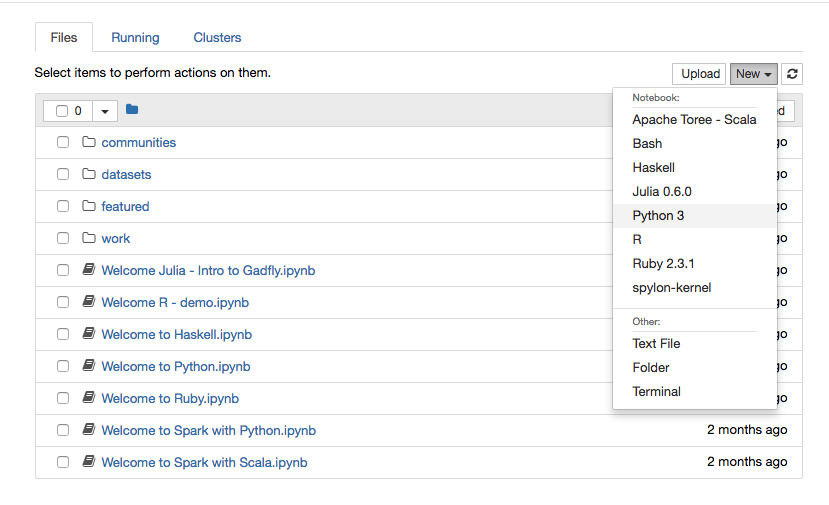Cloud based notebooks
Cloud computing which was just a buzzword a decade back is today the lifeline for many organizations. Cloud is getting immensely popular as it is not only convenient to compute on the cloud but also cost effective.
When it comes to Data Analytics, the cloud sentiment is no different and in fact is it even more convenient compared to other traditional dev ops solutions moved to cloud.
Today there are many cloud based Jupyter notebooks and below you will see a few which are quite popular. By using a cloud based system you skip the Anaconda installation step all together and you can start your analytics without any ado.
Google's colab
Google has a new cloud notebook platform which is free at this time. You can access the platform at: https://colab.research.google.com
The following are its unique features which are very useful:
- Most of the modules present in Anaconda are available plus more.
- You can also install other modules as well but the only drawback is, the computing environment that is given to you when you run the notebook is not saved for you and hence a new one is given for the next time and all the modules that were installed earlier are not available.
- It is based on the popular Jupyter notebook.
- You can save your notebook .ipynb file on your Google drive which is also free up to 15GB. It also means that you should have a Gmail account to save your file and also to run your notebook.
- You can collaborate with other users to edit or share your notebook with only view permissions, just like any other Google drive file.
- Although you can upload a dataset to the temporary computing environment that they provide for running your notebook, it is better to use persistent Google storage to upload your dataset to ensure your dataset is stored permanently. Notebook can seamlessly access files stored on Google storage when you run the notebook.
- You can also save your dataset on Google Drive. In this case you have to mount drive in your notebook to access the dataset and allow the Google file stream to access your Drive account.
- You are given a good high end machine with 13 GB RAM along with the choice of upgrading your CPU to GPU (graphics processing unit) or TPU (tensor processing unit).
- You can also save your file on Github, get your file from private Github repo, run, make changes and save it back to Github.
Note that when a colab notebook is shared with you by another user, you can run the notebook file only after you copy over the file to your Drive. So essentially you run the notebook in your account even though the original file belongs to another user. In any case computing power is given for free at this time but in the future this may change.

Rackspace
Rackspace also provides a free Jupyter notebook environment at: https://mybinder.org/v2/gh/jupyterlab/jupyterlab-demo/master
However please note that the cloud system recycles your instance every 10 minutes of inactivity. If you are working with your own program, then download your work often to ensure your work is not lost. You can start your notebook by choosing New --> Python 3 as shown in the image below.
